
A POEM MADE VISIBLE
I was always slightly allergic to still lifes. They seemed boring. I couldn’t see a story there. In French, the term is nature morte—dead nature. I just didn’t see the point.
After seeing a few still lifes that I genuinely adore, I’m slowly changing my ways. To see the still life paintings of Henri Fantin-Latour or Olga Abramova is to see concise poetry. These artists exhibit rhythm and harmony, an economy of tone and contrast.
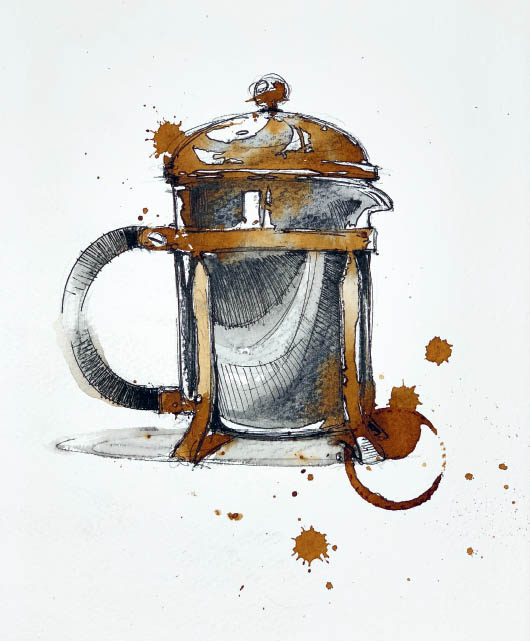
Not every still life has to be a bowl of fruit. My French press coffee pot, ink and graphite.
A NEW WAY TO SEE OBJECTS

This is a jar of some of my favorite brushes. It’s a simple group of objects, but it holds meaning for me, and this is key for depicting still life. You must feel what these objects have to say. Truly see them. These brushes form a little family. Each one is an actor waiting in the wings, and here they’re all huddled together ready to perform. “Pick me! Pick me!” they seem to say.
Sketching Process
1 | Begin with a quick pencil sketch to find the overall form.
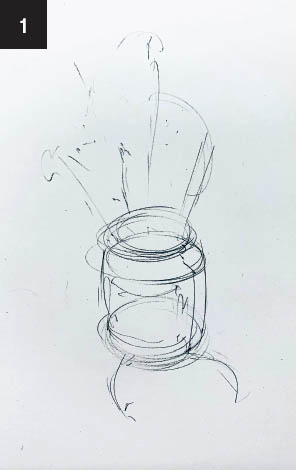
2 | Move to an ink pen, keeping your lines loose. You want to depict energy and movement, even in a still composition.
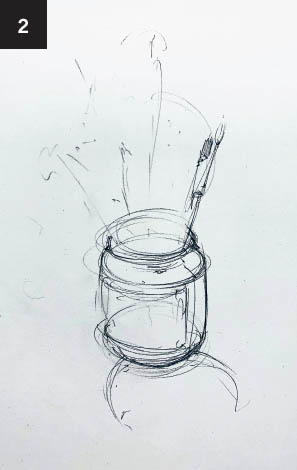
3 | The glass jar has a squat solidity to it, holding everyone in place, but also reflecting and refracting light.
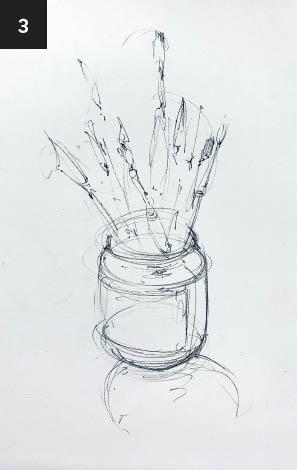
RENDERING LIGHT

Still life is one of the best ways I know to study how light reflects and refracts on different objects. This can teach us volumes about the color and quality of shadows.
When light shines on an object, it creates highlights, shade, dark shadows, and a range of mid-tones. But light also bounces! Light reflects off other surfaces, bouncing back, and illuminating shadows in interesting ways.

Reflected light is such a beautiful phenomenon that to see it captured in a sketch is a joy to behold. To render this effect, we must see that the darkest part of a shadow isn’t the far side of this ball, furthest from the light source. The darkest part is about two-thirds of the way around the ball. Light bounces off the ground, reflecting into the deep shadow, creating a slight highlight.
ADDING COLOR

When color is added, the effect gets more interesting. An object may be a certain color, but reflected light is often a different color. Light bouncing off a warm orange surface will reflect a warm orange light, even if it’s reflecting onto a cool blue object. Pushing warm colors into cool shadows is a wonderful technique to practice.
Sketching a still life offers the perfect opportunity to observe the effects of light reflecting, bouncing, and coloring objects. When these objects are glass, light bends and refracts, creating unexpected highlights within deep shadows.

This sketch of two flower vases offers countless possibilities to capture light and shadow. The objects are ceramic and glass on a bright yellow table, so there are different reflective textures and colors. To contrast with the yellow table, I painted the shadows a cool lavender.
Sketching and Painting Process
1 | After lightly sketching the vases and flowers, I painted a wash of yellow for the table. Light is coming from the upper left, behind the objects. This creates a highlight on the yellow table, so I left this slightly lighter.
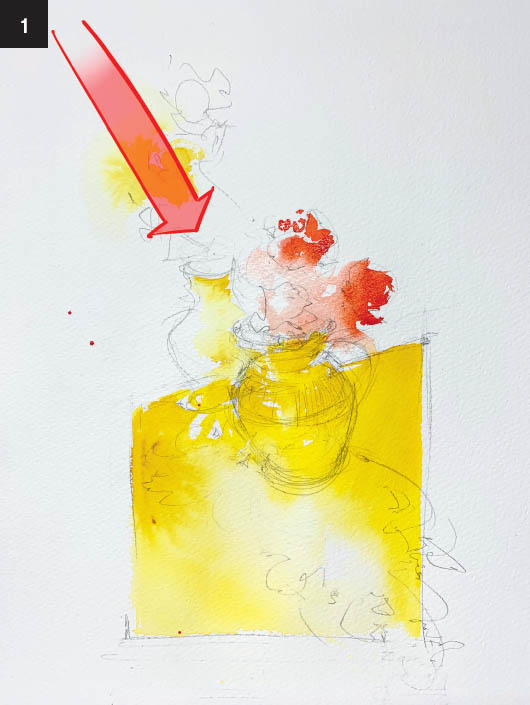
2 | Adding the lavender shadow is a chance to vary the density of this color, creating the illusion of light reflecting into and lightening the shadow. Sunlight also bounces onto the darkest parts of the ceramic vase, creating yellow highlights in an otherwise dark brown object. And finally, light refracts through the glass vase on the left. This light shines through the glass, creating a patch of light on the table in the shadow.

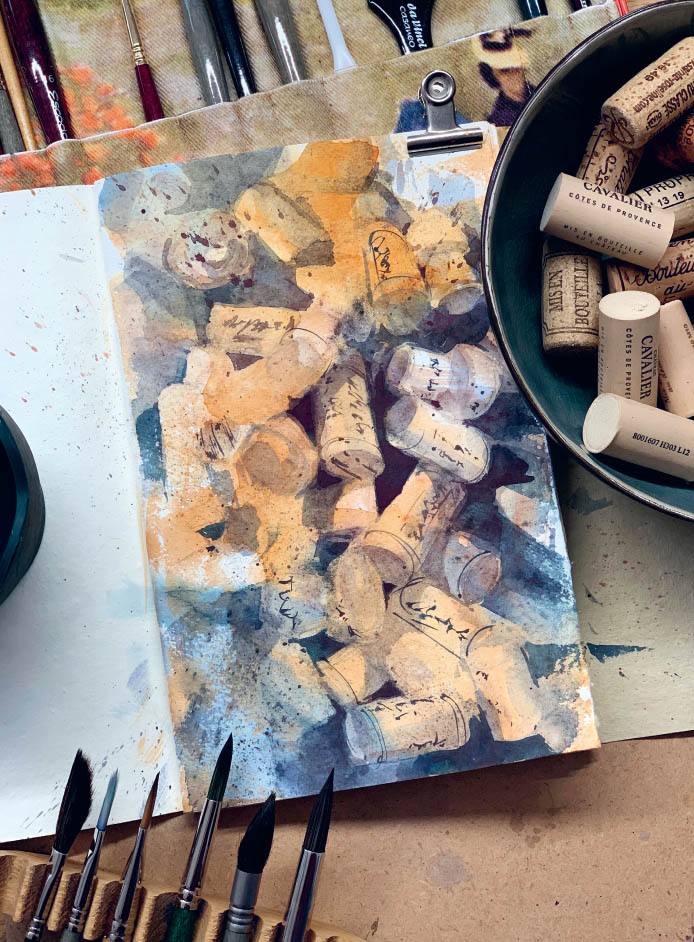
Sketching this bowl of wine corks provided a wonderful opportunity to play with warm and cool colors to create depth.
STRUCTURE
I primarily draw and paint architecture, but ideas about structure apply to landscape, still life, and figure drawing as well.
We may be drawing on two-dimensional paper, but we can’t forget that we are drawing three-dimensional objects, so it’s best to think in terms of voulme. Sketching the outline of something can be a nice exercise, but a more useful way to approach drawing is by depicting the structure and volume of objects, just as a sculptor would.
To do this we must think in terms of three-dimensional shapes. Rather than seeing a circle, square, or triangle, see a sphere, cube, and pyramid or wedge. These are the shapes we see around us every day that make up our environments. To give life to our sketches, thinking about these shapes this way is a great start.
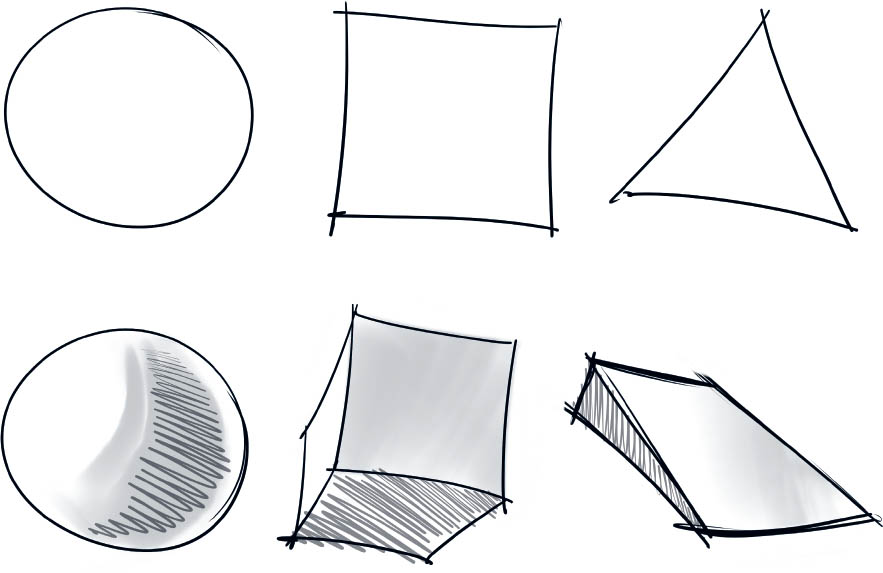
NEGATIVE SPACE

When you’re first getting your head around an object to sketch, a useful tool is thinking about the negative space.
Negative space is everything your object isn’t.
It’s helpful to think about the shape of negative space as a tool to define your main subject. When sketching the roofline of a building, the negative space is the sky. When sketching a bridge, the negative space is the shape that fills in the arches.
Once you’ve drawn a certain object, and if it doesn’t look quite right, shift your focus and check the shapes of the negative space. Learning how to see the negative space around your subject can become a powerful tool to help align the proportions of a sketch.
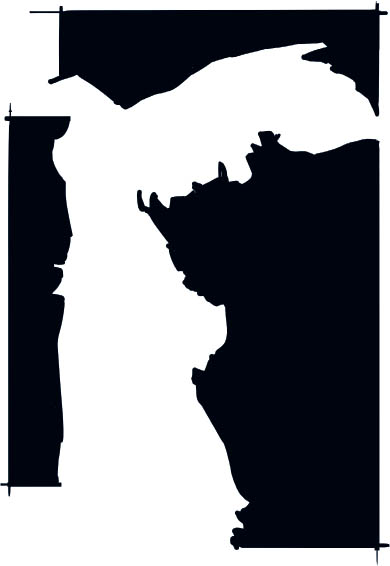
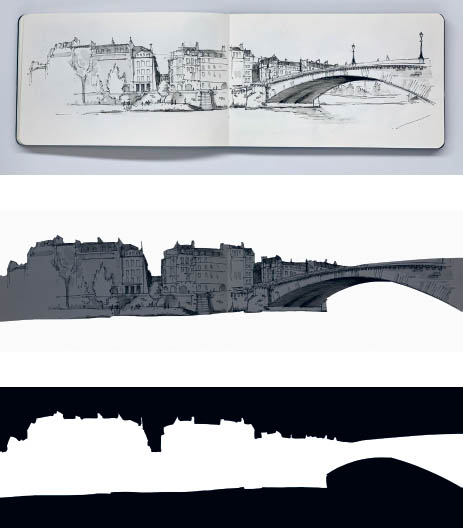

Not every still life has to be a bowl of fruit. My French press coffee pot, ink and graphite.

Old keys provide plenty of opportunities to play with light, shadow, and texture. Pencil and ink on paper.
